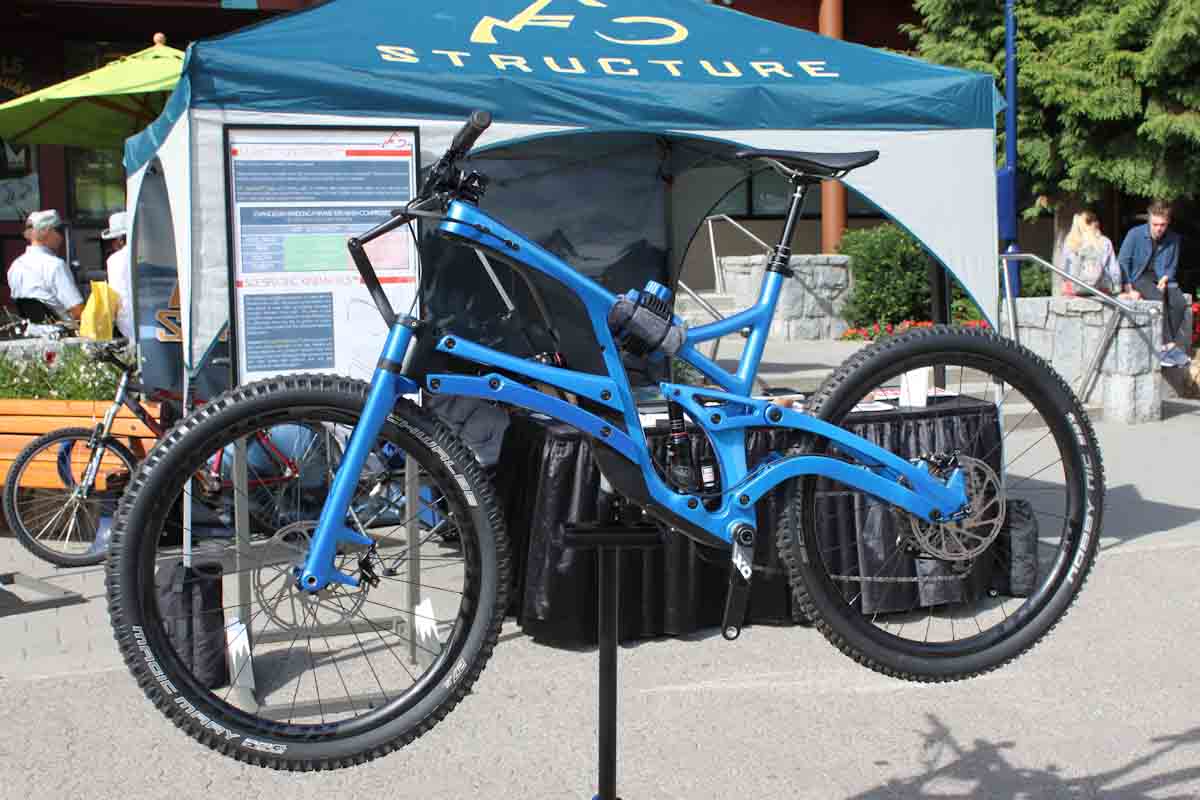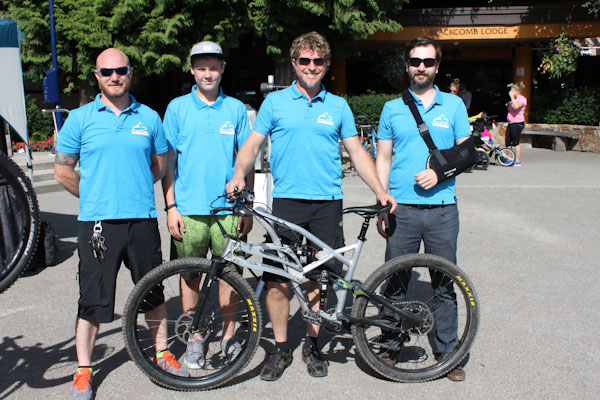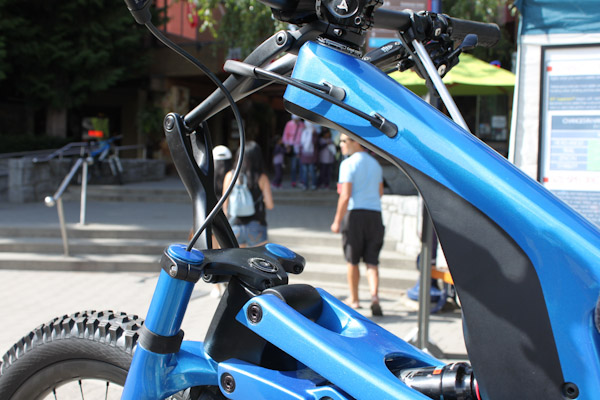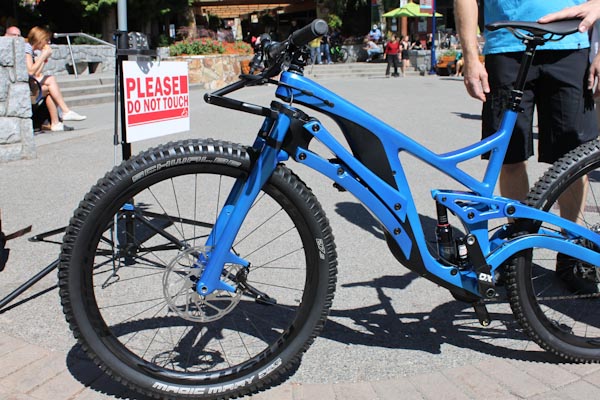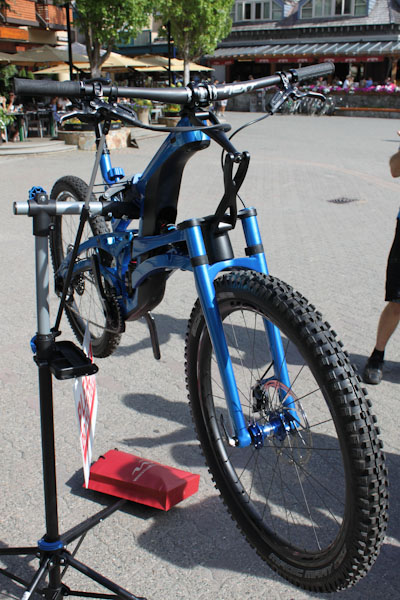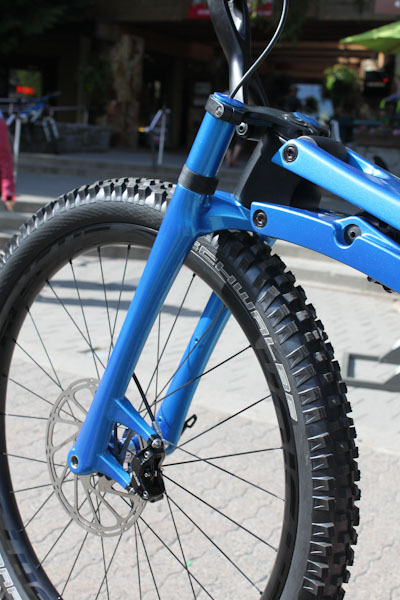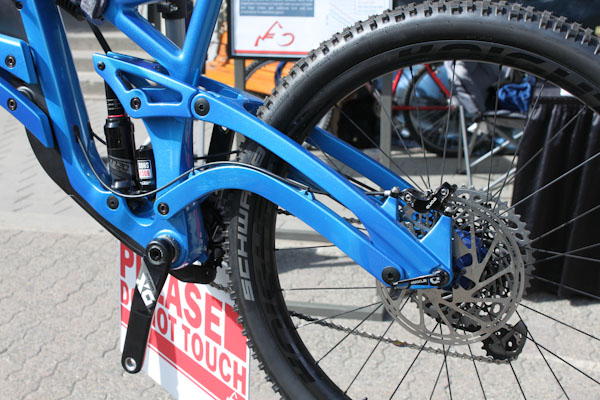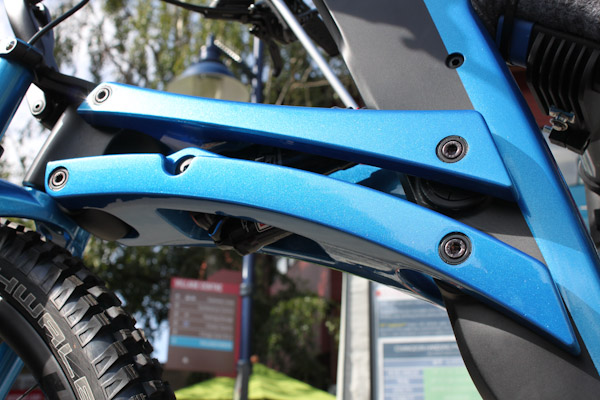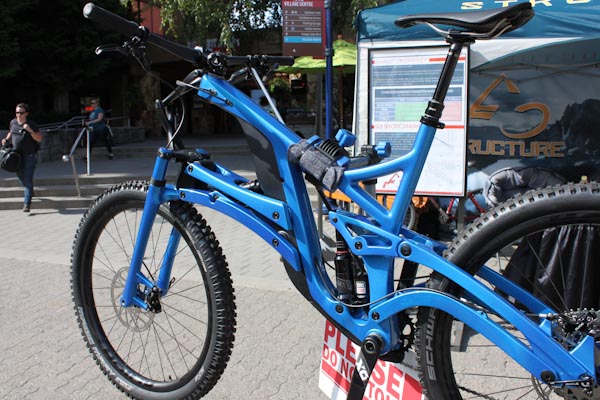And the award for most interesting bike at Crankworx Whistler goes to… Structure Cycleworks! Based in Calgary, Alberta, this upstart company has decided to do away with telescoping forks in order to create a bike that theoretically offers better stability and control when you need it most.
When a traditional fork compresses it reduces its available travel, shortens your wheelbase and steepens your steering angle. The (yet unnamed) Structure bike acts in the opposite manner- As you brake and/or compress the suspension, the front end resists brake dive, the steering angle gets slacker, and your wheelbase is maintained.
I was lined up (and deathly curious) to ride the prototype, but unfortunately another journalist smashed it into a tree and broke the fork! While we can only speculate on how it might ride, I can at least explain the creators’ thinking behind the concept…
The prototype seen above has been tested for three years on various trail networks across North America, and all its pivot locations are adjustable so the designers could fine-tune everything as they went. The blue carbon framed version is still just a mock-up of a production model, so some areas of the frame will see refinements before consumer-ready bikes are made. If all goes well, they’re hoping to hit the market in 2018. The carbon frames will be manufactured in Asia, while hardware and injection-molded parts will be made in Canada.
The obvious eye-catcher on this bike is the front end. It’s hard not to notice the linkages, the missing head tube and steering link that connects the bars to the fork. Engineer Ryan Rasmussen says by using bearings and pivots instead of two seals and stanchions (which are constantly producing friction), the Structure’s front end is highly active and smooth. A Rockshox Super Deluxe rear shock provides six inches of travel from the front end.
The fork is a rigid carbon dual-crown unit, and as you compress the suspension its steering angle slackens by 6 degrees. Rasmussen says his design resists brake dive better than a telescoping fork, leaving more travel available, and because your wheelbase doesn’t shrink you don’t sacrifice stability when it’s needed most.
Despite its normal appearance the rear linkage on the Structure bike received just as much attention as the front. The rear end is a horst-link design which offers six inches of travel, handled by a second Super Deluxe shock. The ride tuning is all about the pivot locations, which are slightly altered for every different frame size…
Structure Cycleworks believes a bike should be built around the rider’s center of gravity, so on both the front and rear ends pivot locations will vary. This ensures a shorter person with a lower center of gravity (and usually lower body weight) will get a more linear linkage that requires less leverage to become active. Larger frames will be more progressive leverage-wise, so top-heavy riders don’t just blow through travel and suffer poor pedalling performance.
The bike is definitely unique, and so is Structure’s sizing system. Three sizes will be offered, but all frames will feature cuttable seat tubes to offer more height adjustment within each. The idea is that riders can choose their frame based primarily on reach preferences, however this seems contradictory to the idea of suspension-tuning each frame size to best accommodate its rider.
While this complex bike looks heavy it actually isn’t- Structure says the frame weight is mid-market, and they expect complete builds to come in at around 30lbs. The price tag, however, gets a bit heavy. While MSRP isn’t yet decided, the cost of a frame is expected to be about $2000 over most other top-tier frames.
Does all this raise a few questions in your mind? Check out Structure Cycleworks’ website for further details.
